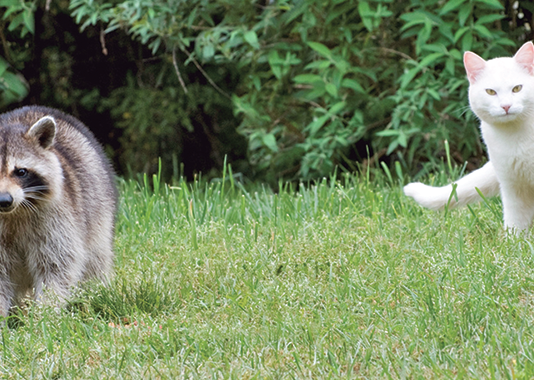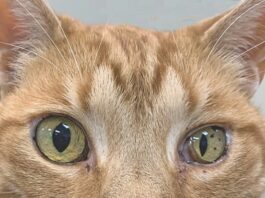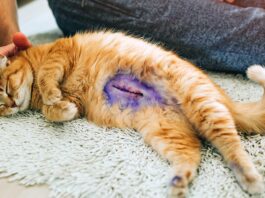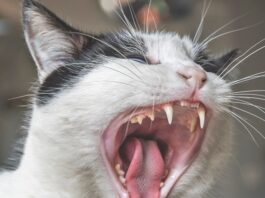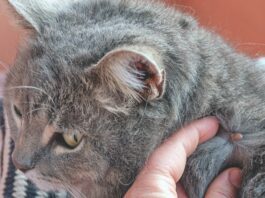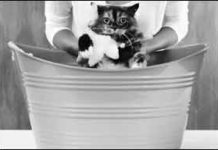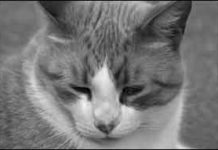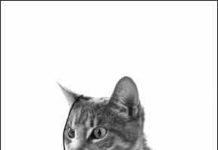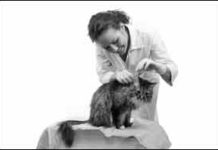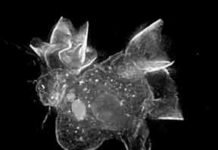Seven Common Grooming Mistakes
Cats enjoy a reputation for being stellar self-groomers, but they reap enhanced health benefits by having their nails trimmed, their coats brushed and, yes, even receiving the occasional bath. To ensure successful at-home grooming, Hayley Keyes, Executive Director of the International Professional Groomers, Inc. and an international master certified professional cat groomer, shares seven tactics to avoid common mistakes. “There are different techniques when it comes to brushing and bathing a cat versus a dog,” says Keyes, who operates the Nanhall Pet Spa/School of Grooming in Greensboro, N.C. “But the bottom line is that you want these grooming times to be safe and stress free for the both of you.”
Protecting Against a Deadly Virus
Young kittens may seem fearless when they demonstrate their acrobatic talents during play, but they’re no match for the potentially deadly disease feline panleukopenia. Sometimes referred to as feline distemper, the disease is caused by the feline panleukopenia virus (FPV). The highly contagious, hard-to-kill virus can spread from infected cats or kittens to other kittens or adult cats who haven’t been vaccinated against it. In addition, recent studies confirm that there has been crossover of the infectivity between cats and newer types of parvovirus usually found in dogs. Parvo Crossover. While some newer canine parvovirus strains can transmit the viral disease to unvaccinated cats, this does not appear to cause disease in most cases, and also does not appear to occur at a rate to cause alarm because the current vaccines used in cats provide protection.
Indoor Cats Can Get Heartworm Disease
The American Heartworm Society and American Association of Feline Practitioners have partnered to educate pet owners and veterinary professionals about the need to protect cats from heartworm disease. One misconception that they would like to correct is that indoor cats aren’t at risk for heartworm disease. In fact, one retrospective study found that 25 percent of the cats diagnosed with the disease were indoor cats. The reason: mosquitoes, which transmit the disease, can get indoors.
Easing the Discomfort of GI Sufferers
While the cure for inflammatory bowel disease remains elusive, new strides on the nutritional and pharmaceutical fronts are helping affected cats lead healthier lives. The use of novel or hydrolyzed diets coupled with the administration of the synthetic steroid prednisolone seems to offer an effective one-two therapeutic punch for most cats diagnosed with IBD, says Joseph Wakshlag, DVM, Ph.D., Associate Professor of Clinical Nutrition at the Cornell University College of Veterinary Medicine.
‘An Itchy Cat Feels Miserable’
Fortunately for cats, parasitic mites are more likely to feast on dogs, but felines aren’t home free. Affected cats can appear moth-eaten, missing patches of fur on the head, neck and ears, but mange is more than unsightly. “An itchy cat feels miserable,” says dermatologist William H. Miller, VMD, Medical Director of Cornell University Hospital for Animals. “Itchy cats often get grumpy and hide frequently, lose their appetites, and sleep a lot when they aren’t itching.” What’s more, mites can cause skin conditions ranging from dandruff to infected sores.
An Itchy Cat Feels Miserable
Fortunately for cats, parasitic mites are more likely to feast on dogs, but felines aren’t home free. Affected cats can appear moth-eaten, missing patches of fur on the head, neck and ears, but mange is more than unsightly. “An itchy cat feels miserable,” says dermatologist William H. Miller, VMD, Medical Director of Cornell University Hospital for Animals. “Itchy cats often get grumpy and hide frequently, lose their appetites, and sleep a lot when they aren’t itching.” What’s more, mites can cause skin conditions ranging from dandruff to infected sores.
Be Ready to Act in a Choking Emergency
Our cats don’t live in a protective bubble, and their feline curiosity can create potential choking hazards. Some cats can start to choke if they gobble large amounts of dry food too quickly or accidentally swallow string. Witnessing your cat in a wide-legged stance, coughing, gasping for breath can be frightening. That’s why it’s vital to know the proper response to keep him safe. “Cats can choke on kibble or toys, but most commonly, they come to the emergency room choking on a foreign object due to chewing on thread or swallowing needles,” says Dan Fletcher, DVM, Ph.D., Assistant Professor of Emergency and Critical Care at the Cornell University College of Veterinary Medicine.
The Most Common Neurological Disease
Advances in medications have given veterinarians and cat owners more choices for controlling seizures with fewer side effects. The most commonly used medications are phenobarbital and the newer drugs zonisamide and levetiracetam. “These anti-epileptic medications modify neural transmission in the brain to reduce the number of seizures an animal experiences,” says neurologist Sofia Cerda-Gonzalez, DVM, Assistant Professor of Neurology and Neurosurgery at the Cornell University College of Veterinary Medicine.
Tracking a Parasite as it Invades the Brain
It’s common knowledge that pregnant women should avoid litter boxes to avoid contact with toxoplasma. The parasite found in cat feces can cause toxoplasmosis, a disease that may cause a number of developmental abnormalities in developing fetuses and neurologic, ocular and other potentially severe problems in people with compromised immune systems. Research in recent years has shown an association between toxoplasmosis and schizophrenia, depression and anxiety. Studies also suggest that the disease can influence levels of human aggression, extroversion and risk-taking. Now a study by the Karolinska Institute in Sweden suggests a mechanism by which toxoplasma may influence the behavior of its hosts.
Ask Elizabeth: March 2013
As you know, we cats are very sensitive creatures, but in your case, as with other cats with feline hypersensitivity syndrome (FHS), this sensitivity seems to be ratcheted up. FHS is a recognized syndrome in the feline world, although the definitive cause is not clear. While it is not, in and of itself, believed to seriously affect overall health or longevity, a few important points regarding this unusual behavioral syndrome are worth making, especially for our human friends who are commonly puzzled by its manifestations. FHS, also variably referred to as rolling skin syndrome and atypical neurodermatitis, is characterized by dramatic twitching or rippling of the skin, most commonly on the back between the middle of the spine and the base of the tail or in the flank region, with intermittent jerking of the body and exaggerated tail movements.
A Study of Stem Cells to Improve Kidney Function
A clinical trial under way at Colorado State University is using stem cells to treat cats with late-stage chronic kidney disease (CKD). “There’s a lot of hype around stem cells right now,” says lead researcher Stephen Dow, DVM, Ph.D. “Unfortunately, a lot of the claims are unsubstantiated. We hope to show whether the cells make a difference in cats with CKD.” The researchers want to determine if the injection of stem cells in 20 cats will improve kidney function, reduce side effects such as inflammation and fibrosis, and delay the disease’s progression.
When Weight Loss Is Cause for Alarm
Most owners know that an older feline who has turned into a fat cat may be ill or, at the very least, may have a shorter lifespan than his thinner counterpart. However, owners whose senior cats appear to have lost weight for no discernible reason need to be concerned, too.“If the weight loss in a senior cat is visually apparent, it is time to contact the veterinarian,” says Andrea N. Johnston, DVM, DACVIM, an Instructor in Clinical Sciences at the Cornell University College of Veterinary Medicine. “Weight loss often reflects an underlying disease process, not aging itself.

